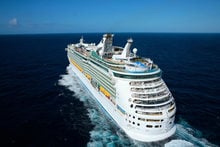Richard Fain, Royal Caribbean’s Chairman and former CEO, is sharing some of the most dramatic, nail-biting moments throughout the cruise line’s history in his new book.

His new book is titled Delivering the WOW: Culture as Catalyst for Lasting Success and will be released on October 21, 2025. I was lucky enough to receive an advance copy of Fain’s book, which is packed with juicy secrets from Royal Caribbean’s history.
Fain served as Royal Caribbean's CEO for more than three decades. While the cruise line started as a small Norwegian company with three vessels, Fain propelled Royal Caribbean into becoming one of the most valuable and profitable cruise lines in the world.
Before taking on the role of CEO for Royal Caribbean, Fain worked for Gotaas-Larsen Shipping Corporation. This was a Norwegian shipping company and one of the three companies that co-founded Royal Caribbean. Fain served as treasurer, Chief Financial Officer, and Joint Managing Director during his 13 years at Gotaas-Larsen Shipping Company.
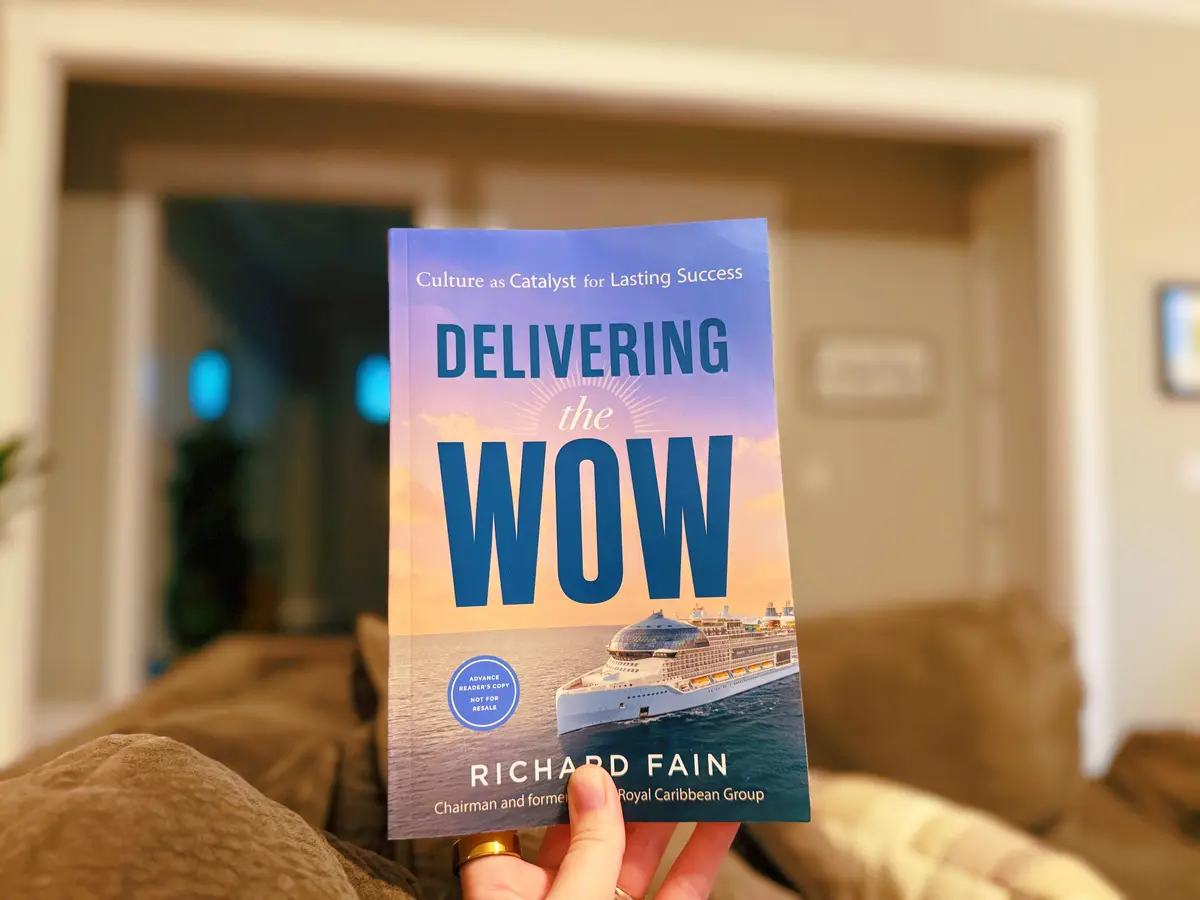
In 2022, Fain stepped down from his position as Royal Caribbean Group's CEO and still serves as a Chairman and Director of the Board. However, Royal Caribbean announced in June 2025 that Fain will step down from his position as Chairman. Instead, Jason Liberty, current Royal Caribbean Group President and CEO, will succeed as Chairman beginning in Q4 2025.
Throughout the book, Fain outlines Royal Caribbean’s massive transformation during his time as CEO. The story highlights many lessons learned, including insights on business leadership and the importance of Royal Caribbean's WOW-focused culture.
While the book leans heavily into the actionable business insights from Royal Caribbean’s history, Fain sprinkles in dramatic moments throughout Royal Caribbean’s long history. For instance, he shares how the original design of Icon of the Seas’ Aquadome was originally sketched on a napkin in the break room!
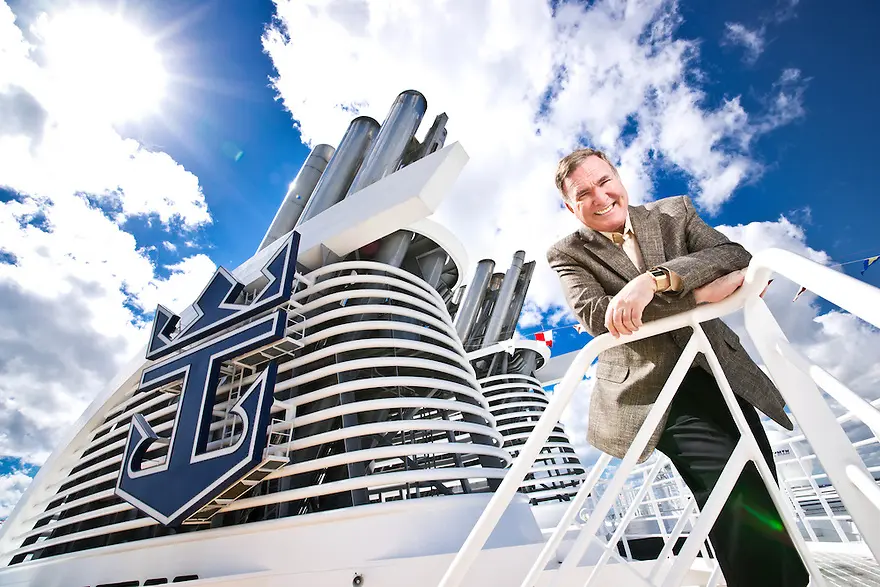
As a longtime fan of Royal Caribbean and business analyst, I was eager to read Fain’s stories and business perspective. While I’m not a huge reader, Fain’s book was fun and easy to read. I loved hearing his personal and professional thoughts on many key moments in Royal Caribbean’s history.
Here are some of Fain’s biggest Royal Caribbean secrets and behind-the-scenes moments from his 30 years as Royal Caribbean Group’s CEO.
If you want to purchase Richard Fain’s new book, Delivering the WOW, you can pre-order it here on Amazon. By using our link, Royal Caribbean Blog receives a small commission at no extra cost to you.
1. Sovereign of the Seas' construction was almost cancelled during the 1987 recession

At the end of 1987, Fain was asked to be the Chairman and CEO of Royal Caribbean Group, and he accepted. The role would begin in the first quarter of 1988, aligning with the launch of Royal Caribbean’s first megaship, Sovereign of the Seas.
Then the unexpected happened. While Fain was looking forward to his new CEO position, the New York Stock Exchange dropped 23 percent on October 19, 1987, which is now known as “Black Monday." At the time, this was the largest single-day market drop in American history.
With so much uncertainty, Fain says the future of traveling and cruising was up in the air. The former CEO shares how he received a panicked phone call from one of the company's shareholders, urging him to cancel the order for Sovereign of the Seas.
That call came from George Soros, one of the largest shareholders in Gotaas-Larsen. Although Fain had worked with Soros before, this conversation was different. And while Sovereign of the Seas was almost completely built, Soros insisted that Fain cancel the ship’s order.
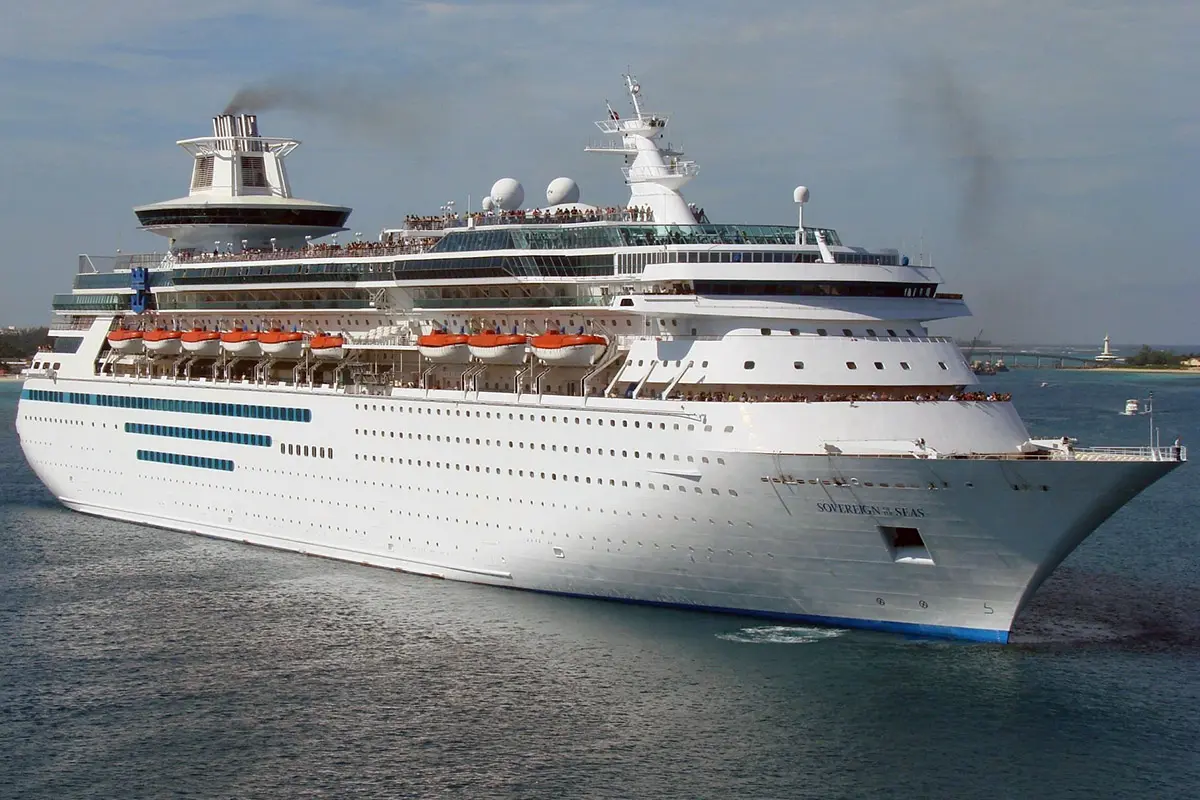
Fain explains the tense conversation in his book: “George opened up without any of our usual preliminaries: ‘Richard, you need to cancel the order for the Sovereign of the Seas.’ I said, ‘George, we can’t cancel the order. The ship’s finished. It’s almost built.’
He said, ‘I know it’s almost done, but you’ve got to cancel, because nobody’s ever going to want to cruise again. Everybody should just act now, and if they feel poor, they won’t buy a cruise. You should act before the shipyard realizes how bad the future will be.’
I said, ‘George, even if that’s true, the ship is built. We can’t cancel. They’re already vacuuming the carpets!’ He said, ‘You may have to pay them a penalty, but you’ve got to cancel.’”
Fain details that he was confident in the cruise industry’s resiliency from previous recessions, and he didn’t share the stock market’s widespread pessimism.
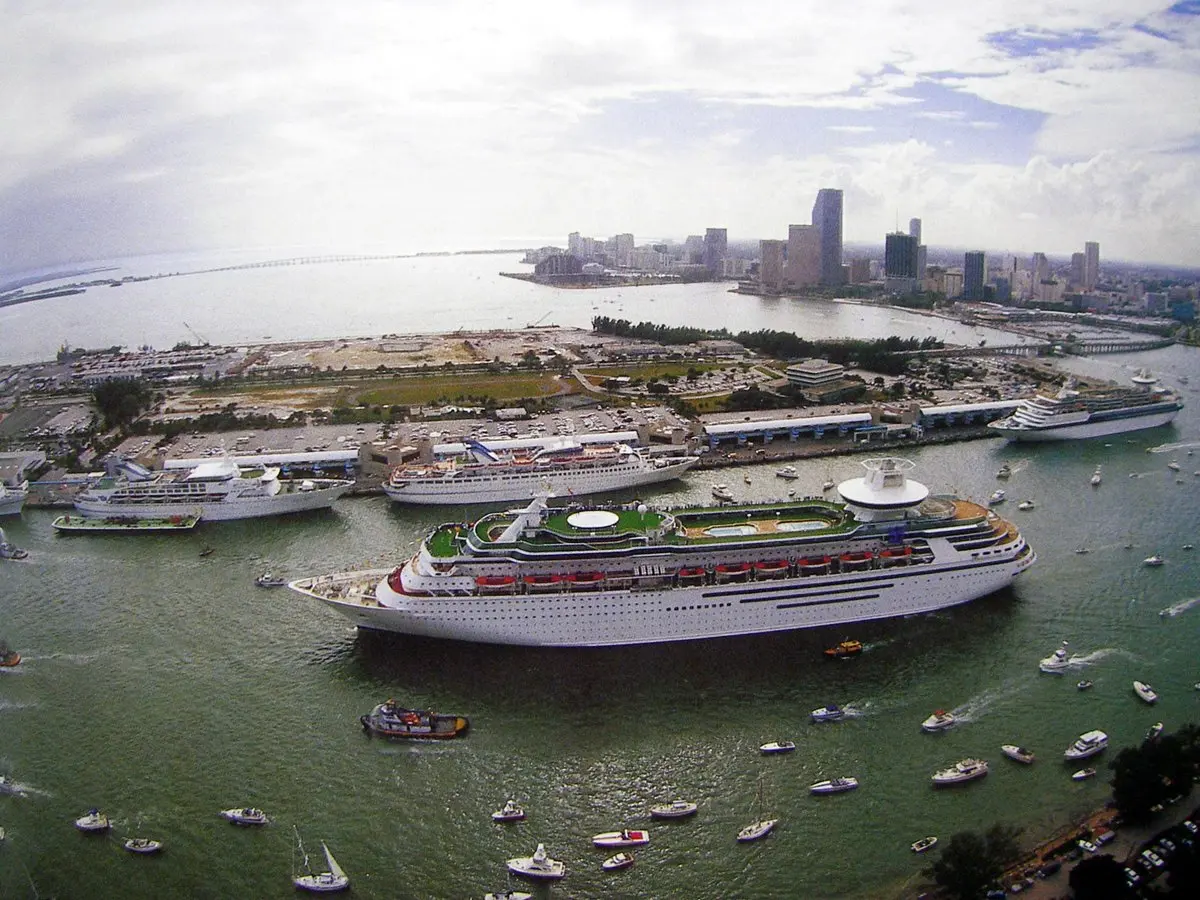
He writes, “I reminded [George] that Gotaas-Larsen owned only one-third of Royal Caribbean. We couldn’t unilaterally demand the cancellation of a contract. Fortunately…the 1987 crash was short lived. Within six months, the stock market was back to where it had been.”
Just a few months later, on January 15, 1988, Sovereign of the Sea debuted and was blessed by her godmother, Rosalynn Carter. She became one of the most important cruise ships in Royal Caribbean's history.
2. Carnival tried to buy Royal Caribbean in 1988
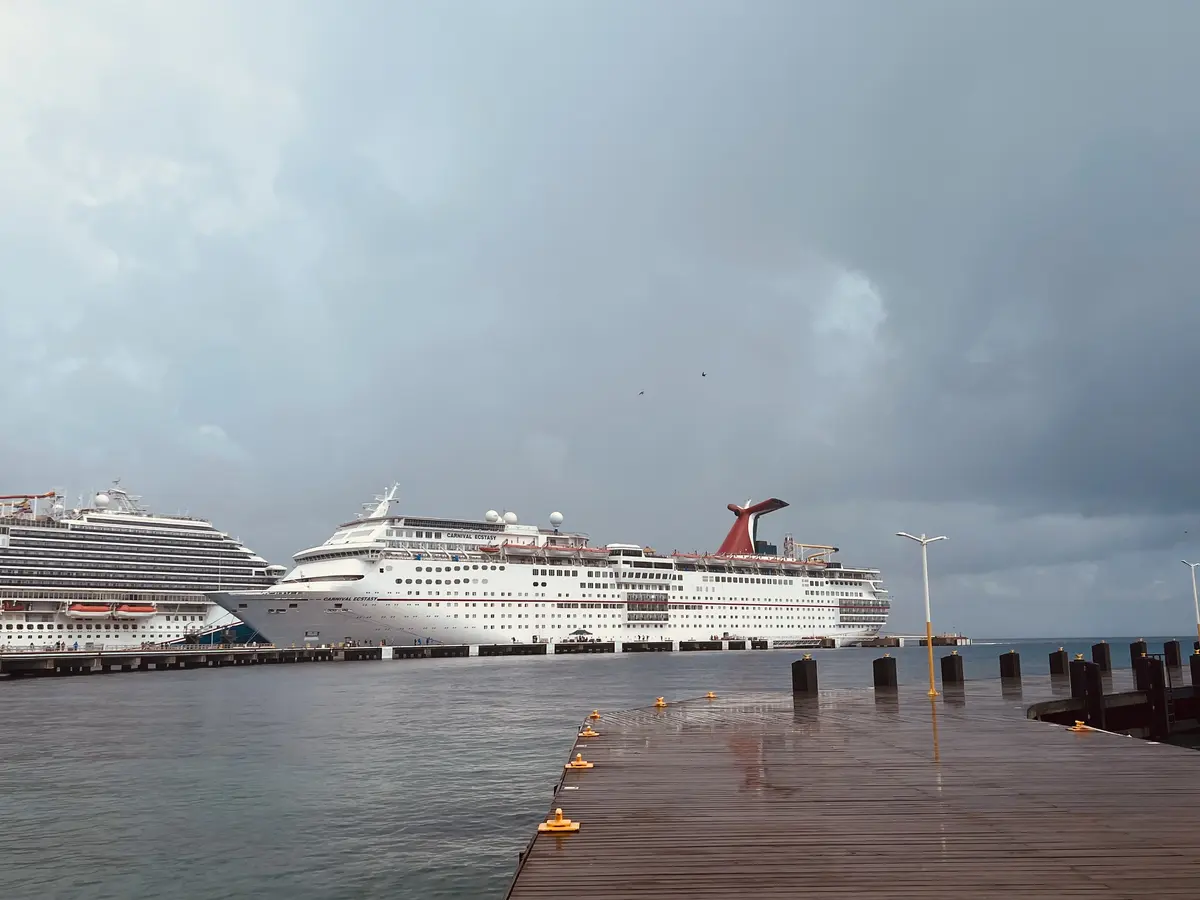
After her debut, Sovereign of the Seas was a massive success for Royal Caribbean. Fain explains how the megaship was “profitable from her maiden voyage on and her guest satisfaction scores were the highest in the company’s history.”
He continues that the future of Royal Caribbean was looking bright with such strong performance from Sovereign of the Seas. By May 1988, the company was looking at building on the success of Sovereign of the Seas, but competitor Carnival Cruise Line had other plans.
Fain explains, “One morning, Jack Seabrook, the chairman of Gotaas-Larsen, called with shocking news. Carnival, the largest and most powerful cruise line in the world, wanted to buy Royal Caribbean. With that news, our future, our vision, everything we had been working toward was in play. I had only been Royal’s CEO for a few weeks, and suddenly, this call sounded like it might change everything.”
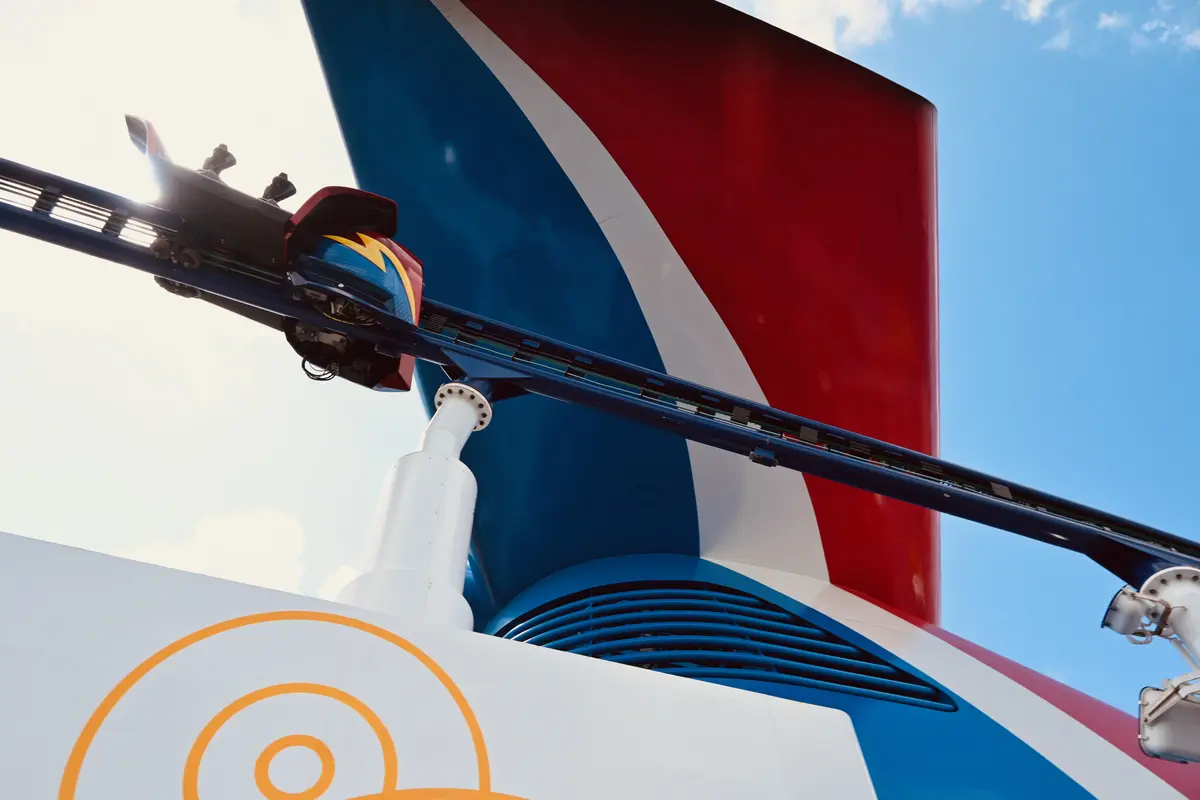
The clock started ticking on a high-stakes, fast-paced deal. Over the course of 40 days, Fain scrambled to find an alternative option. He details late-night negotiations and unexpected network connections, determined to keep Royal Caribbean’s independence.
At one point, a massive wire transfer was needed to secure Royal Caribbean’s future. However, Fain explains that the transfer, worth $300 million, was somehow lost in the London banking system with only a few hours left on the clock. This was the capital needed to finalize a new partnership that would block Carnival's takeover. Without this, Carnival's offer would become the default, and Royal Caribbean's independence would be lost.
When the money finally arrived at the last possible moment, Royal Caribbean entered into a new partnership that allowed the company to maintain its independence. As Fain reflects in the book, this was a make-or-break moment that defined the company and later proved the importance of lasting partnerships.
3. Royal Caribbean’s signature rock climbing wall almost didn’t happen
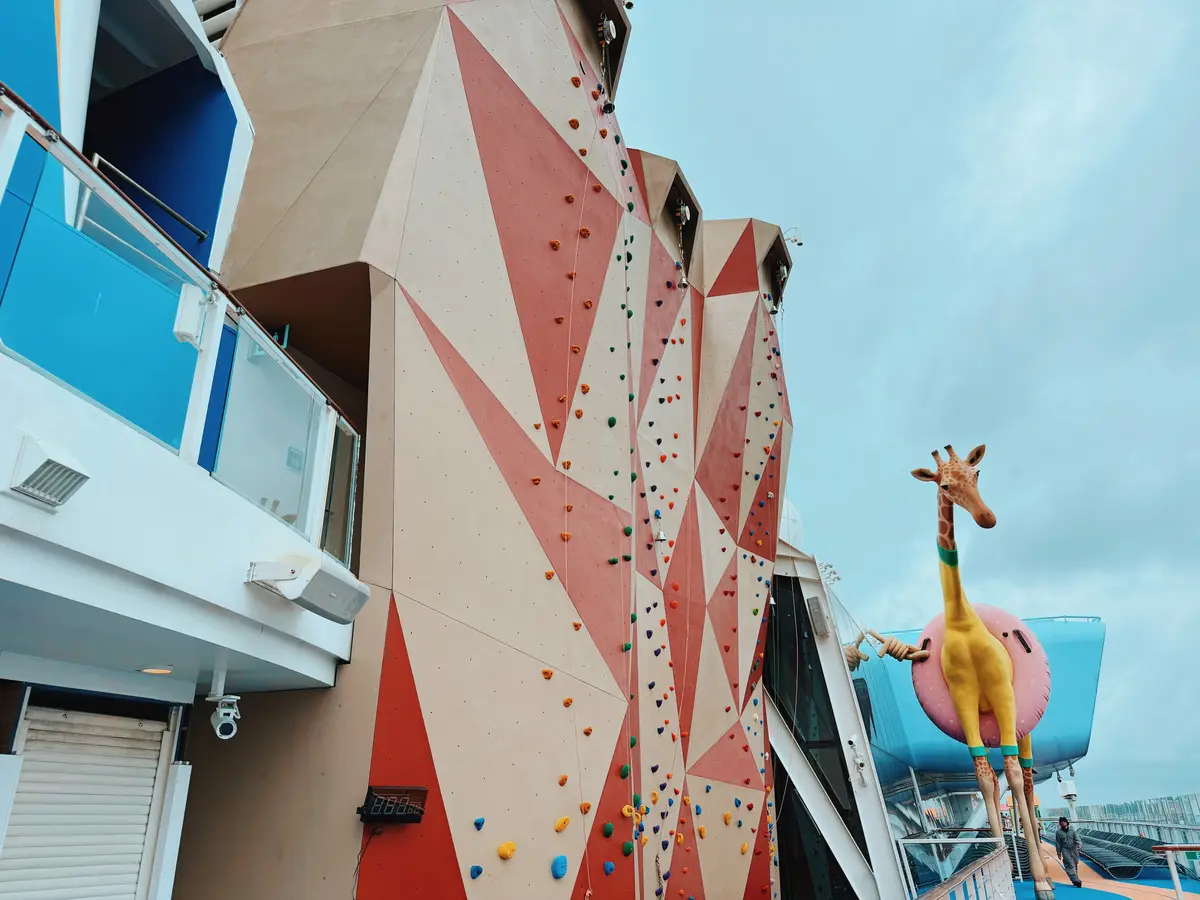
Royal Caribbean is known for its one-of-a-kind, innovative thrills that you can’t find on any other cruise ship. One of the cruise line’s first notable and unique additions to its ships was a rock climbing wall. While it doesn’t seem as significant compared to today’s attractions, including full-scale waterparks, surf simulators, and zip-lines, the addition was revolutionary at the time.
Fain details how some of the company’s youngest team members actually pitched the idea of a rock climbing wall - and he resisted at first.
In his book, the former CEO explains during the final design stages for Voyager of the Seas in 1999, there was a large, empty space behind the ship’s funnel. Fain asked a small team of younger team members to imagine something interesting to put there, hoping for a fresh perspective.
After studying the ship’s design for several weeks, the team came back with a proposal for the rock-climbing wall. The team explained how the vertical space was perfect for a rock wall, and there would be plenty of space for equipment. The team also pointed out that rock climbing was becoming one of the fastest-growing sports in America, and could be popular with Royal Caribbean’s younger guests.
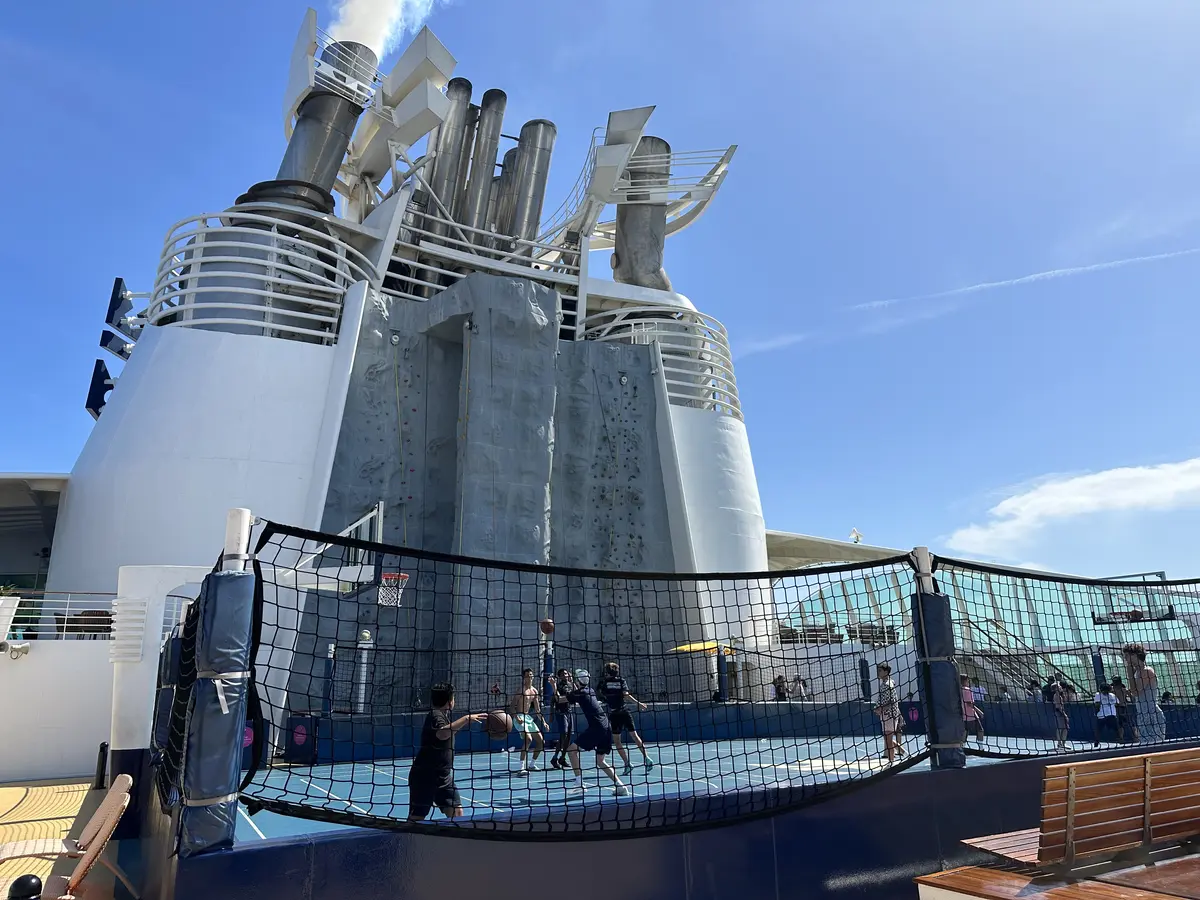
Fain states, “I resisted. I could not imagine anyone wanting to change into special gear on vacation and climb a wall. I didn’t tell them, but I privately went to a climbing studio and tried it myself. I came away with several bruises and a conviction that no reasonable person would find this fun.”
The team was pressed to find more reasonable alternatives, but they came back even more convinced that the rock wall would be the winner. “I hated all four ideas, but I thought the rock wall was the least terrible, so I agreed to it.”
However, Fain explains how the rock wall quickly became one of the most talked about features of the new ship.
He writes, “The cruise director commented, ‘Only a fraction of guests actually climb the wall, but it’s one of the most photographed features on board. It tells everyone this ship is different.’ It was so popular that we retrofitted it on our existing ships and have since included it on every new ship.”

Fain explains how this taught Royal Caribbean three valuable lessons.
First, not everything needs to appeal to everyone. Even though only 10% of guests use the rock-climbing wall, its presence speaks volumes about the Royal Caribbean cruise experience. Second, it became symbolic of the shift Royal Caribbean was trying to make and emphasized that vacations don’t need to be sedentary. Finally, inspiration is everywhere, especially when you give people the opportunity to be creative.
4. Oasis of the Seas’ test blimp was almost shot down by the Swedish Air Force
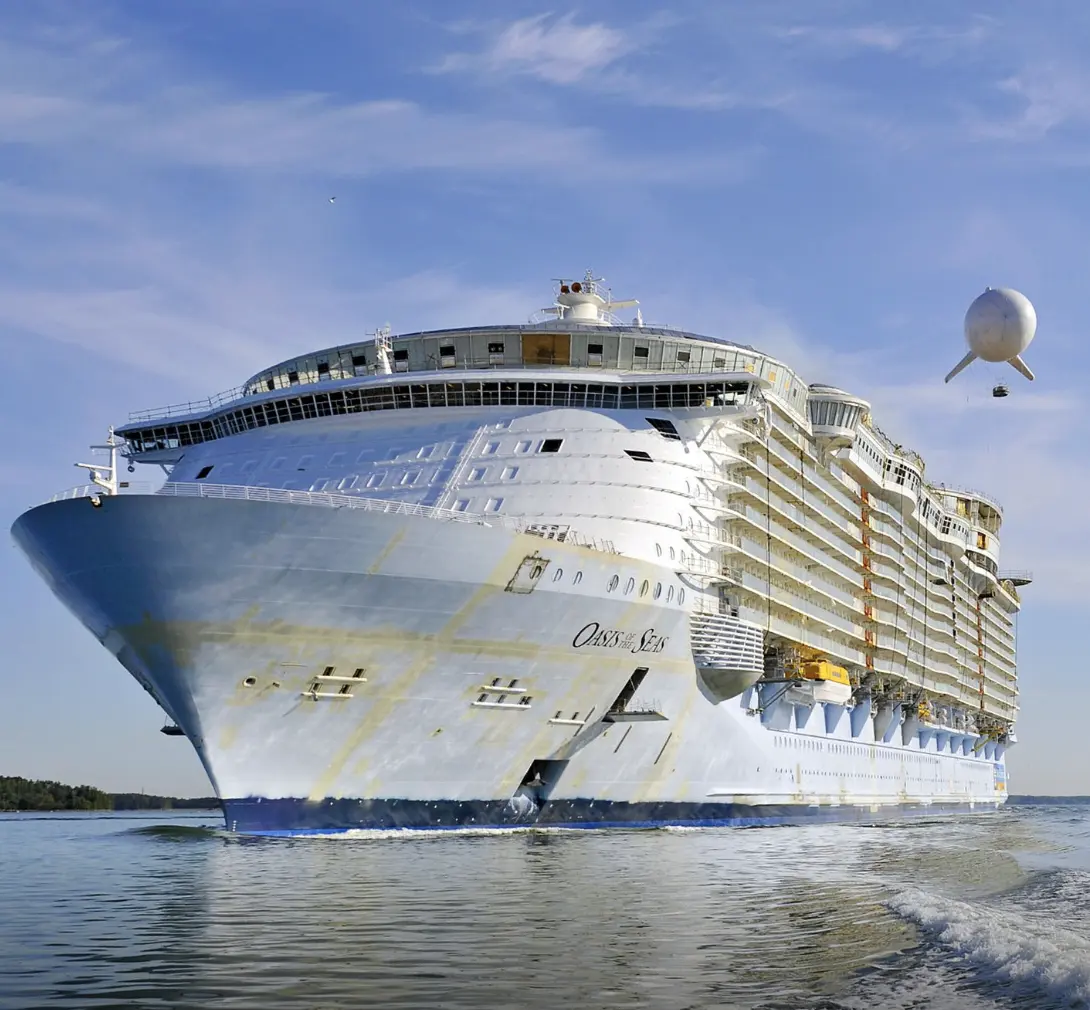
(Photo shared by Loyal to Royal)
While Royal Caribbean has invented some of the most incredible shipboard technology, not all ideas were a success. Fain explains how the cruise line pursued the idea of putting a blimp on Oasis of the Seas, which ended up being a “spectacular failure”.
The blimp was meant to be towed 500 feet in the air above the vessel to give guests a view of the ship and its surroundings. Royal Caribbean hoped it would be a unique guest experience and a distinctive feature visible to people in the distance.
As you can imagine, Fain says the concept was technically challenging. He details, “It had to be able to withstand hurricane force winds and still be comfortable for 12 guests at a time. And it had to be tested under the most difficult of conditions—first in computer simulations, then in a wind tunnel, then on a special racing track, and finally onboard the ship during sea trials.”
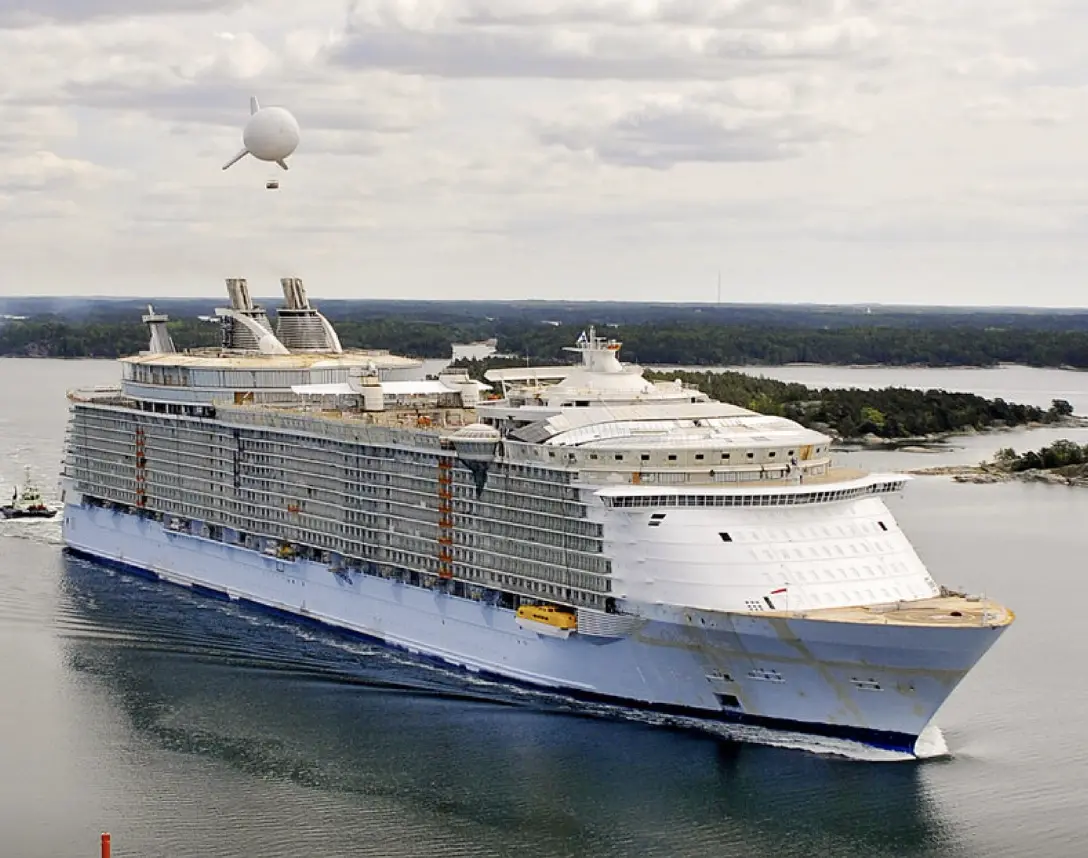
(Photo shared by Loyal to Royal)
In the book, Fain explains how he tried the blimp himself, finding the ride stunning with breathtaking, sweeping views of the Swedish coast. “Once back on solid ground (i.e., the ship’s deck), the safety officer—who had been quiet during the ride—couldn’t stop talking about the view, how awe-inspiring it had been, and how blown away our guests would be.”
Because the blimp’s proper cradle wasn’t ready, the crew members tied the blimp to temporary moorings before bed that day. Unfortunately, there was a storm that night and the blimp actually broke free from the ship and flew away.
“Before we could find it, the captain received a call from the Swedish Air Force. Apparently, our blimp had floated into commercial air space, and the Air Force wanted to shoot it down. Luckily, before they opened fire, the blimp started descending and fell into the ocean. A fishing boat eventually picked it up.”
Fain says the blimp wasn’t meant to be, but it does showcase Royal Caribbean’s continued commitment to innovation at exceptional lengths. Even more importantly, the cruise line isn’t afraid to let go of an idea that isn't the right fit.
5. Royal Caribbean almost failed at building its ice skating rinks

Fain says Royal Caribbean is always determined to expand their entertainment options, especially with each new ship class. While ideating the next innovative space, Studio B came to life. However, the former CEO explains how the Studio B ice skating rink was one of the cruise line’s more interesting technical challenges.
“Our ships already had several entertainment spaces, but we wanted to add one additional space that would be different from anything else on the high seas. Peter Compton, who led our entertainment team, proposed adding a flexible space that would be patterned after the second stage in a TV studio,” writes Fain.
“He proposed calling it Studio B. Like a TV studio, there would be seating for the TV audience, and the space itself would be flexible enough to accommodate many kinds of activities.”

The team imagined what the space could be, but knew they wanted an ice skating rink. While testing artificial ice with a professional figure skater, the cruise line decided that the rink needed real ice. But, Fain never anticipated how challenging this could be.
Fain explains, “We learned instead that normal ice-skating rinks are made by pouring concrete over refrigerant pipes. That works fine on land, but ships flex as they move through the water. Ice can bend (who knew?), but concrete doesn’t.”
Royal Caribbean decided to design a viscous layer that resembled mud. This would stay soft near the bottom but firm towards the top. Because it could bend, the real ice rink could work on Royal Caribbean's Voyager of the Seas.
Fain details how he visited the Finnish shipyard and watched the workers flood Studio B with water to create a smooth sheet of ice, just as he had hoped.

“It looked incredible. We high-fived as the Zamboni started smoothing the surface. I had been nervous, but now I could see for myself that it worked. Success,” says Fain.
Even though the ice looked good, the professional skater said it was too warm and soft to skate on. Fain says his heart sank as he imagined the new magnificent cruise ship debuting with an empty Studio B at its core. Luckily, the engineers found a simple fix that included a new refrigerant with a lower freezing point.
“It made the ice harder and colder and the skaters much happier. The ice-skating rink was so successful that we have put it on 16 ships and became the largest employer of figure skaters in America. My heart leaps every time I watch a performance in Studio B and see those extraordinary skaters effortlessly glide across the ice, as if the laws of friction didn’t exist," states the former CEO.
Fain says this displays Royal Caribbean’s unwavering commitment to its innovation with such a difficult and expensive proposition.




